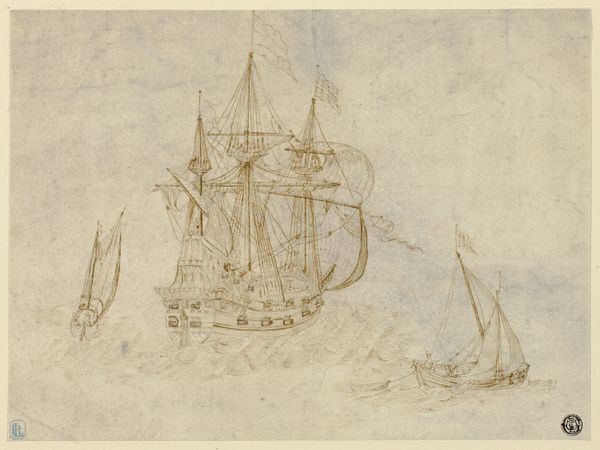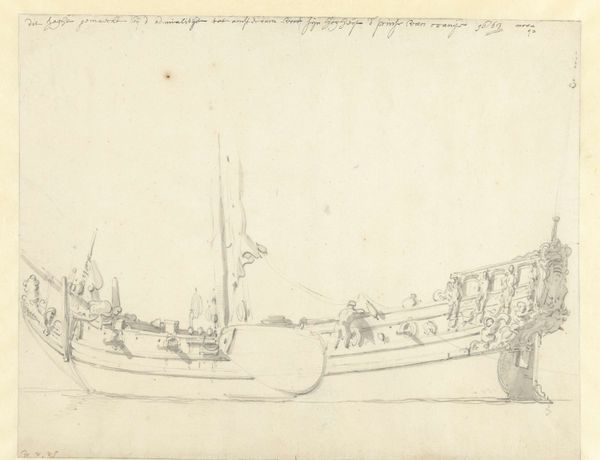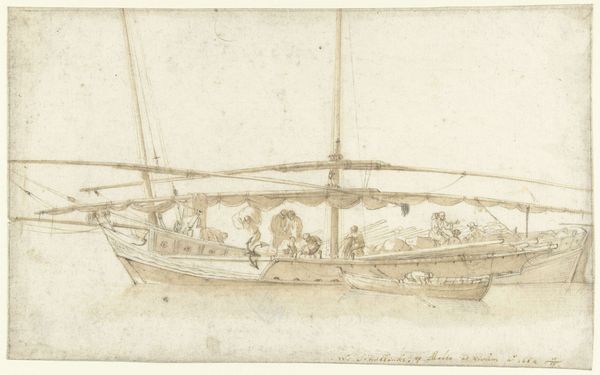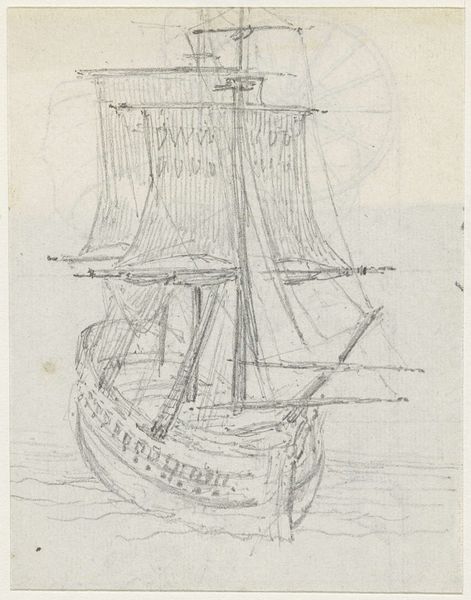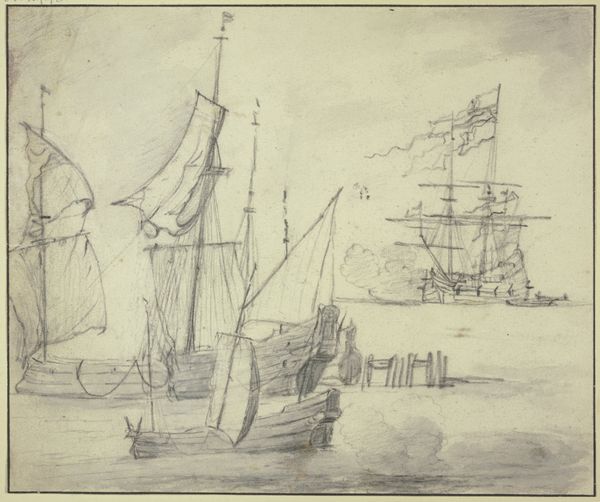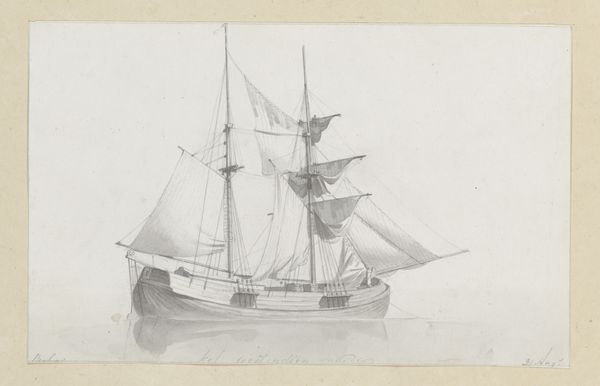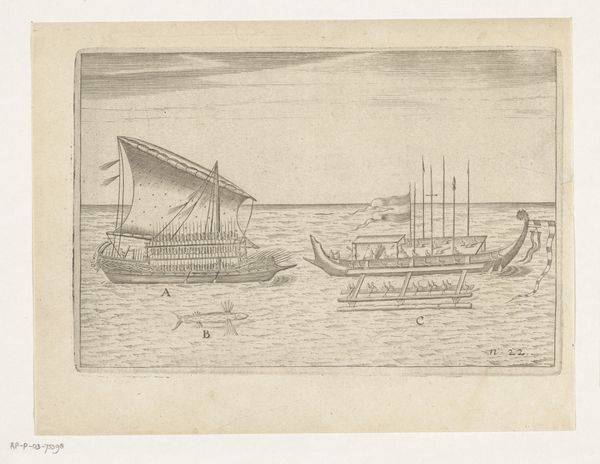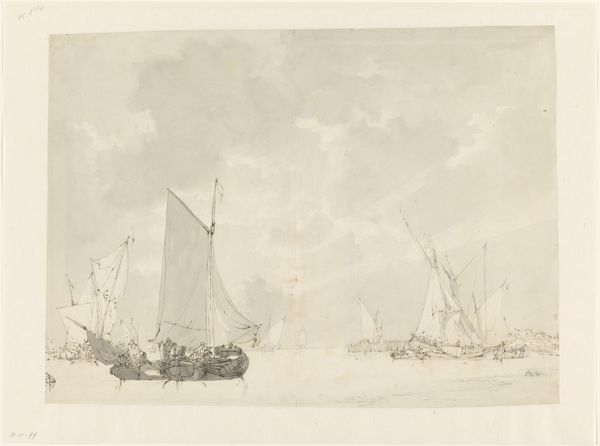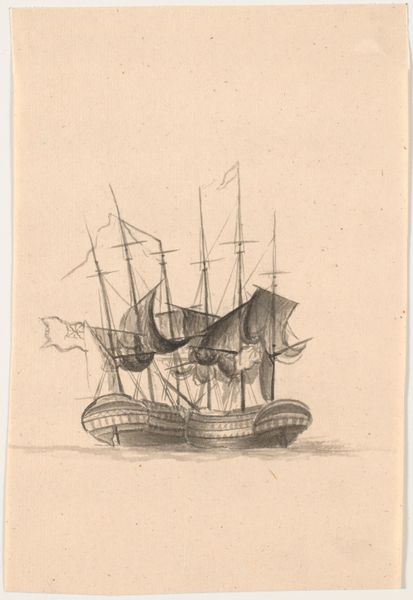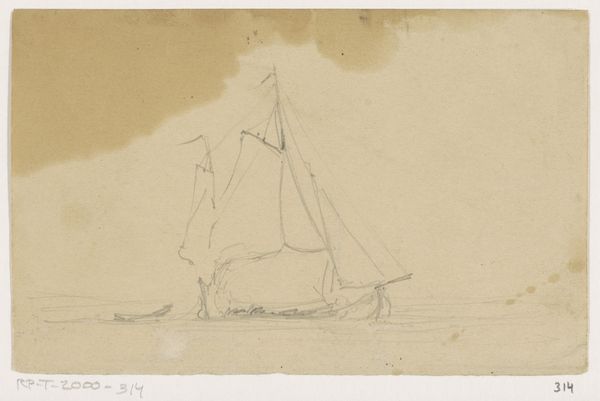
Et skib med sejl og vimpel og en jolle. T.v. to hestevogne 1746 - 1828
0:00
0:00
Dimensions: 125 mm (height) x 164 mm (width) (bladmaal)
Curator: Look at this pencil drawing by C.A. Lorentzen titled "A Ship with Sails and Pennant and a Dinghy. T.v. Two Horse-drawn Carriages", estimated to have been created between 1746 and 1828. It is currently housed at the SMK, the National Gallery of Denmark. My first thought is about its lightness. Almost ethereal. The scene, composed predominantly of lines, possesses an airy and unfixed quality. What do you think? Editor: It's remarkable how much detail he captures with just a pencil. I'm immediately drawn to the contrast between the delicate linework of the ship's rigging and the heavier, almost clumsy, rendering of the horse-drawn carriages on the left. It raises questions about the materials at Lorentzen’s disposal and the economics that might privilege maritime infrastructure versus terrestrial transport. Was he a craftsman more familiar with rendering naval subjects? Curator: I see your point. Considering the time, Denmark was heavily invested in maritime trade and naval power. These images of ships served more than just aesthetic purposes. It speaks volumes of identity, Denmark’s political and economic ambitions, perhaps even how notions of Danishness were tied to the sea. Think about the laborers—from sailors to shipbuilders. Editor: Precisely. It prompts me to reflect upon the labor behind creating these vessels – the craftsmanship and sheer physical exertion embedded in their construction and maintenance, contrasting the lifestyle within those horse-drawn carriages. We also shouldn’t forget the very pencil he used, the paper it’s on and what they signified economically at that time. Curator: Yes, that comparison to labor reminds us to consider access. While the pencil drawing evokes a kind of romantic maritime ideal, it could also be about disparities in society. It underscores how resources, even experiences like travel by land or sea, were dictated by class and power structures. Editor: Absolutely. It all brings us back to the social and material reality that enabled this particular artwork to come into existence. And the context within which it circulated. Curator: Thinking about the image now, it goes beyond a mere depiction. For me, the intersection of sea, craft, class, and travel adds deeper layers of complexity that resonates today. Editor: For me it highlights the value in deconstructing the artist's decision-making process and the labor that enabled him to render a picture and what those subjects may have materially signified within the day's politics.
Comments
No comments
Be the first to comment and join the conversation on the ultimate creative platform.
